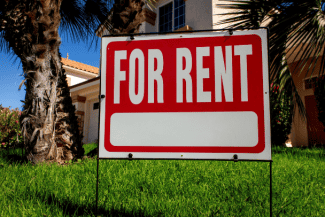Three Tax-specific Paths to Liquidity for Real Estate Investors

But there’s no doubt that the industry should pay attention. Passed in the weeks after the COVID-19 pandemic shut down much of the U.S. economy in 2020, the legislation created several significant tax opportunities that can accelerate tax savings to provide liquidity for commercial real estate investors.
1. First-year depreciation deduction
The 2017 tax reform bill, officially titled the Tax Cuts and Jobs Act of 2017, increased the first-year depreciation deduction from 50 percent to 100 percent for qualified property acquired and placed in service after Sept. 27, 2017, and before Jan. 1, 2023.
This modification is significant because real estate companies are able to deduct the full cost of qualified property in the year of purchase and reduce the after-tax cost of an investment. This deduction will phase down after 2022, so time is of the essence. A cost segregation study should be performed to identify the portion of the purchase price that can be written off in the first year.
Example: A partnership that purchased a multifamily property in 2019 is now able to write off more than 25 percent of the property cost in the year of acquisition, whereas prior to the new tax law, they would have only recovered 10 percent. The partnership can pass out large taxable losses to their investors who can use them to offset other real estate income and gains from the sale of properties.
Result: The 10 percent investor’s allocable share of the first-year depreciation deduction is $1 million, rather than $400,000 under the old law. If you assume the investor has other rental income that will be reduced by this deduction, the rental income would be eligible for the 20 percent qualified business income (QBI) deduction resulting in an effective federal tax rate of 29.6 percent.
The utilization of the $1 million deduction results in a first-year tax savings of $296,000. If a $40 million multifamily property is 65 percent leveraged, this tax savings to the 10 percent investor’s equity investment of $1.4 million results in a first-year return on investment of 21 percent from this tax savings alone.
2. Faster write-offs for interior building improvements
The 2020 CARES Act made a technical correction to the 2017 tax law, which made qualified improvement property (QIP) eligible for the 100 percent bonus depreciation. The CARES Act specifically designates that QIP has a 15-year recovery period for depreciation.
QIP is defined as any improvement to an interior portion of a building that is nonresidential real property, if such improvement is placed in service after the date the building was first placed in service. Expenditures attributable to the enlargement of the building, any elevator or escalator, or the internal structural framework of the building, however, are excluded.
This technical correction is effective for property placed in service after Dec. 31, 2017. Taxpayers or their advisers should review 2018, 2019, and 2020 fixed asset additions and determine if they are QIP.
The taxpayer can then either elect to file an amended tax return to correct the depreciation deduction in the year acquired or elect to file a change in method of accounting, recompute the missed deductions, bring them forward to the current year, and deduct them on their 2019 or 2020 return. Such corrections provide unprecedented potential tax savings for commercial real estate companies.
Example: A commercial real estate partnership acquired an office and retail property in early 2019 and then made a $2 million investment to update and retrofit the interior portion of the property.
Result: In addition to the first-year depreciation deduction on the purchase price of the property, a partnership can deduct the full $2 million investment to improve the property. A 10 percent investor would receive a $200,000 deduction to offset other rental income. Assuming the other rental income is QBI, which carries an effective federal tax rate of 29.6 percent, this investor receives an additional tax savings of $59,200 as a result of the technical correction for QIP.
3. Utilize net operating losses to create liquidity
The added deductions described above can be very substantial by creating a net operating loss (NOL) or substantially increasing an NOL that did not consider these provisions. The NOL can then be used to obtain immediate tax refunds.
The law before the changes by the 2020 CARES Act limited business losses to $500,000 and did not allow NOL carrybacks. In addition, the NOL carryforward was limited to 80 percent of the taxpayer’s income in future years.
But now, under the provisions of the CARES Act, businesses have the choice of recalculating the depreciation that should have been allowed in those prior years and then deciding to either amend those years or bring the added deductions forward and catch it all up in their extended 2019 or 2020 returns.
If those deductions are large enough to create net operating losses, taxpayers, including investors in and owners of commercial real estate, can carryback those losses and obtain immediate tax refunds for tax paid at any time in the last five years.
Modeling of the potential loss carryback and refund opportunities becomes essential to determine the highest and best use of the losses. Your losses, if carried forward, might only offset income otherwise taxed at 29.6 percent versus; if carried back, they might reduce income that was taxed at 39.6 percent to provide a refund.
Example: If the losses created by the added deductions are not passive, then a taxpayer can utilize those losses to offset other income, thereby creating an NOL.
Result: Using the two previous examples, a 10 percent non-passive investor could utilize the $1 million multifamily added bonus depreciation and the $200,000 QIP bonus depreciation to reduce their current year income by $1.2 million. If this investor had $500,000 of other income, then the losses would generate a $700,000 NOL.
If the above investments were made in 2019, the $700,000 NOL could be carried back (and assuming $500,000 of income in 2014 and 2015) to obtain a refund of tax paid in those years. A married person filing a joint return who had reported income of $500,000 in those prior years and incurred a $700,000 NOL in 2019 could receive a federal refund of $215,000, in addition to the savings of $145,000 on the 2019 deductions.
These provisions create a great opportunity for commercial real estate companies to review past fixed asset additions, plan for current and future asset additions through 2022, and take advantage of the write-offs allowed by these new and expanded legislative provisions to provide liquidity in the current real estate market.
Source: dbusiness.com















 Accessibility
Accessibility